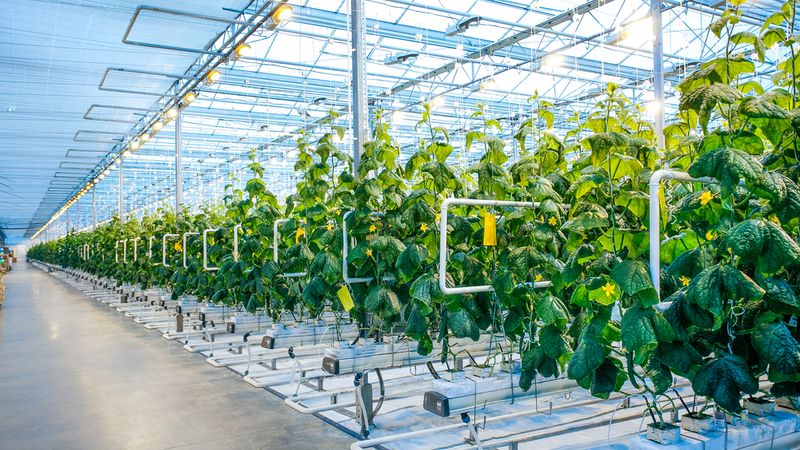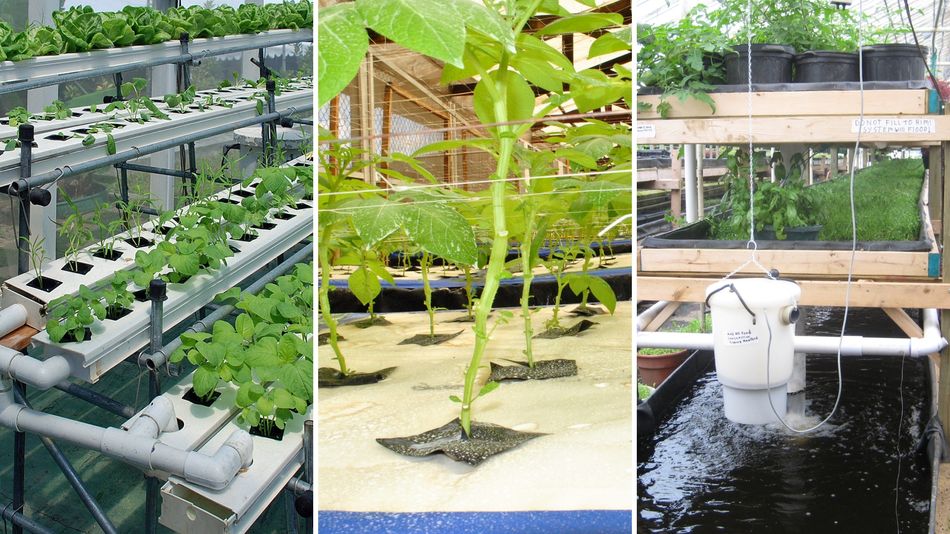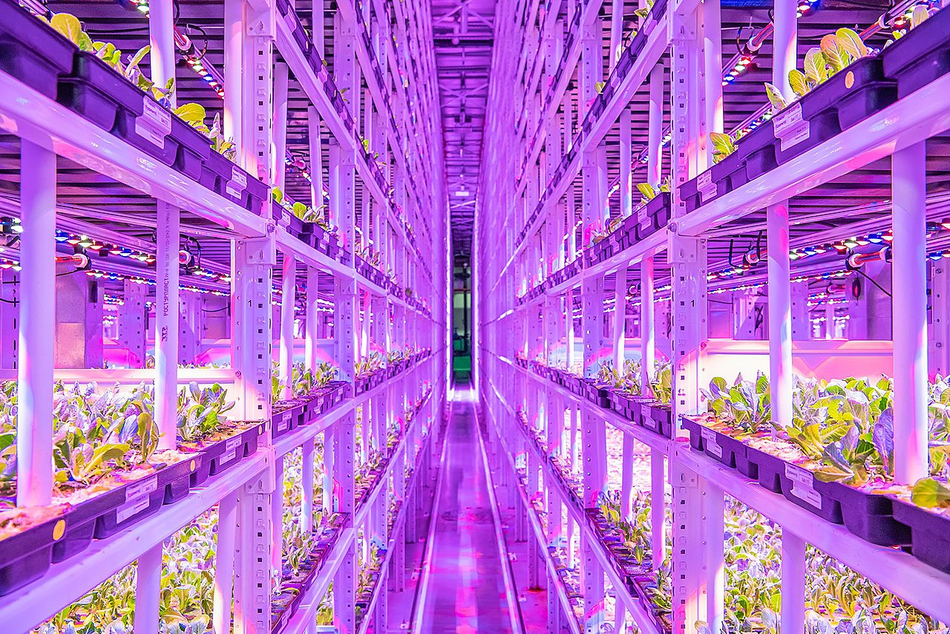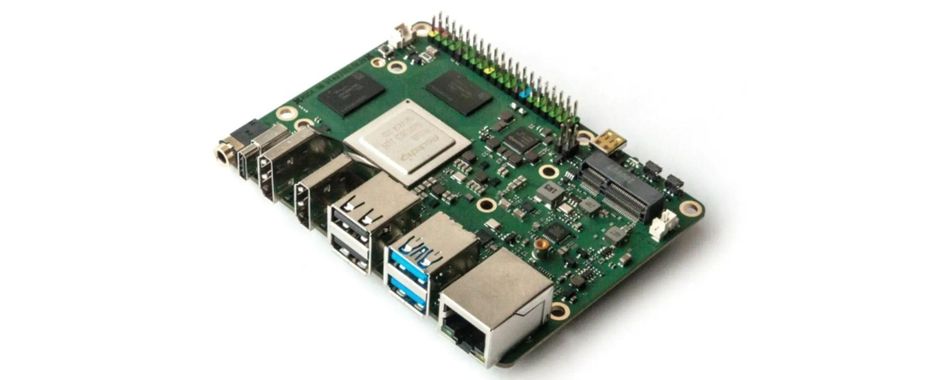Applying Single Board Computers (SBCs) in Indoor Agriculture Applications
Single Board Computers are radically improving indoor agriculture by optimizing environmental conditions, enabling IoT applications, and integrating AI for sustainable, efficient farming.
Introduction
Indoor agriculture has gained significant traction in recent years as a sustainable solution to the challenges of traditional farming methods. In particular, using Single Board Computers (SBCs) in indoor farming has revolutionized the industry by offering increased efficiency, control, and automation. These compact, low-cost computers can manage various aspects of an indoor farming system, from climate control to nutrient management.
This article delves into the world of SBCs and their role in indoor agriculture, exploring their many applications and offering guidance on setting up an SBC-based system. By harnessing the power of these versatile devices, indoor farmers can optimize their operations and promote a more sustainable future for agriculture.
Understanding Single Board Computers (SBCs)
An SBC is a compact computing device that houses all the essential components of a traditional computer on a single circuit board. These components typically include a processor, memory, storage, and input/output (I/O) interfaces. SBCs vary in size, processing power, and functionality, making them suitable for a wide range of applications, from simple tasks such as basic home automation, data logging, and digital signage to more complex operations like advanced industrial automation, robotics, and 3D printing.
The architecture of an SBC is designed to be efficient and streamlined. The processor, often an ARM or x86-based chip, serves as the central processing unit (CPU), carrying out instructions and performing calculations. Memory, typically in the form of RAM, allows the SBC to store and quickly access data during operation. Storage options for SBCs can include onboard flash memory or external storage devices, such as SD cards or USB drives. The I/O interfaces provide connectivity options for peripherals, sensors, and actuators, with common interfaces including GPIO, USB, Ethernet, and HDMI.
SBCs execute instructions stored in their memory, process data, and interact with connected devices through their I/O interfaces. Due to their compact size, low power consumption, and cost-effective nature, SBCs have become increasingly popular in various industries, including indoor agriculture.
Indoor Agriculture and Its Challenges
Indoor agriculture is the practice of growing plants in controlled environments, such as greenhouses or vertical farms. This approach offers several benefits, including the ability to grow crops year-round, regardless of external weather conditions, and the potential for increased crop yields due to optimized growing conditions. Indoor agriculture also enables more efficient use of resources, such as water and nutrients, and can help reduce the environmental impact of traditional farming practices.
There are various types of indoor farming systems, each with its unique advantages. They are:
- Hydroponics: Hydroponics involves growing plants in nutrient-rich water without the use of soil, leading to faster growth rates and reduced water consumption.
- Aeroponics: Aeroponics is a method in which plant roots are suspended in air and periodically misted with nutrient-rich water, providing even greater water efficiency and promoting healthy root development.
- Aquaponics: Aquaponics combines hydroponics with aquaculture, using fish waste as a natural fertilizer for the plants while the plants help filter the water for the fish.
The adoption of indoor agriculture has been steadily increasing due to advancements in technology and growing concerns about global food security. As the world's population continues to grow and urbanization reduces the availability of arable land, indoor agriculture offers a promising solution for meeting the increasing demand for fresh produce sustainably.
Despite its numerous benefits, indoor agriculture faces several challenges. One of the primary challenges is the precise control of environmental conditions, such as temperature, humidity, and CO2 levels. Another challenge is the complexity of the monitoring systems needed to manage indoor agricultural environments. These systems must collect data from various sensors, process it in real-time, and make necessary adjustments to maintain optimal conditions. Implementing and maintaining such systems can be both time-consuming and costly.
Energy consumption is also a significant concern in indoor agriculture. Artificial lighting, climate control, and irrigation systems all require energy to operate, and inefficient use of these resources can lead to increased production costs and a larger carbon footprint. Identifying ways to minimize energy consumption while still providing the necessary conditions for plant growth is a critical aspect of sustainable indoor farming.
Addressing these challenges is essential for the continued success and growth of indoor agriculture. Innovative solutions, such as the integration of Single Board Computers (SBCs), can help overcome these obstacles by providing more efficient and cost-effective means of managing and controlling indoor farming systems.
Applications of SBCs in Indoor Agriculture
By leveraging the power and versatility of SBCs, efficient, automated systems can be built that address the challenges faced in indoor agriculture, ultimately improving crop yields and sustainability. The following are some key applications of SBCs in indoor agriculture:
Climate Control and Monitoring
By integrating SBCs with various sensors and actuators, growers can create intelligent systems capable of maintaining optimal environmental conditions for plant growth. For example, temperature sensors can provide real-time data to an SBC, which then adjusts the heating or cooling systems accordingly to maintain a consistent temperature.
SBCs can also be used to monitor and control humidity levels within an indoor farming environment. By integrating humidity sensors and actuators, such as humidifiers and dehumidifiers, an SBC can ensure that the humidity remains within the desired range for optimal plant growth. Additionally, SBCs can be connected to CO2 sensors, allowing for the control of CO2 levels in the growing environment, which can significantly impact plant growth rates and overall productivity.
One of the advantages of using SBCs in climate control and monitoring is their ability to collect and analyze vast amounts of data. This data can be used to identify trends, optimize environmental conditions, and ultimately improve crop yields. For instance, an SBC could analyze temperature, humidity, and CO2 data over time, then recommend adjusting these variables to achieve better results.
Automation of Irrigation Systems
SBCs can be utilized to automate irrigation systems in indoor farming, giving growers more control over water usage and nutrient delivery. By connecting SBCs to water pumps and valves, growers can create custom irrigation schedules that ensure plants receive the appropriate amount of water and nutrients at the right time.
SBC-based irrigation systems can also be designed to respond to real-time data from moisture sensors placed in the growing medium. When the moisture levels fall below a specified threshold, the SBC can activate the irrigation system to deliver water to the plants, ensuring they receive the proper hydration without overwatering.
LED Lighting Control
With SBCs integrated into LED lighting systems, growers can create custom lighting schedules that optimize light intensity, duration, and spectral composition for each stage of plant growth. This level of control allows growers to maximize photosynthesis and promote healthy plant development.
SBC-based lighting control systems can adjust the light spectrum to provide more blue light during the vegetative stage of plant growth, promoting strong stem and leaf development. During the flowering stage, the system can be adjusted to provide more red light, encouraging flower and fruit production.
Nutrient Management
Nutrient management is a critical aspect of indoor farming systems, and SBCs can play a significant role in optimizing this process. By integrating SBCs with sensors that monitor nutrient levels in the growing medium or water, growers can ensure that their plants receive the appropriate balance of nutrients for optimal growth.
An SBC-based nutrient management system can continuously monitor nutrient concentrations and make real-time adjustments to the nutrient delivery system. This allows for precise control over nutrient levels
Setting Up an SBC-Based Indoor Agriculture System
Setting up an SBC-based indoor agriculture system involves several steps, from selecting the right SBC to integrating sensors, actuators, and custom software, as well as designing a user-friendly interface for monitoring and control. Here’s a deeper look:
Selecting the Right SBC
When choosing the right SBC for an indoor agriculture application, several factors must be considered. These include processing power, connectivity options, and expandability. Processing power is crucial, as it determines the SBC's ability to handle complex tasks and run multiple processes simultaneously.
Connectivity options are another essential factor to consider when selecting an SBC. Many indoor agriculture applications require the integration of various sensors, actuators, and other devices. Ensure the chosen SBC has enough input/output (I/O) pins and supports the necessary communication protocols, such as I2C, SPI, and UART. Additionally, consider the SBC's ability to connect to the internet or local networks for remote monitoring and control.
When it comes to expandability, some SBCs offer expansion boards, also known as "shields" or "HATs," that can be easily attached to the main board to provide additional functionality. These expansion boards can simplify the integration of sensors, actuators, and other components, allowing for a more modular and easily customizable system.
Different SBCs may be better suited for specific applications. For example, an Arduino Uno may be more appropriate for simple automation tasks, while a NVIDIA® Jetson Nano or the ROCK 5 Model B SBC might be better suited for complex projects requiring significant data processing and analysis capabilities.
Integrating Sensors and Actuators
Connecting sensors and actuators to an SBC is an essential step in setting up an indoor agriculture system. Before connecting these components, ensure they are compatible with the chosen SBC, as different boards may have varying voltage levels and communication protocols.
Examples of common sensors used in indoor agriculture include temperature, humidity, CO2, light, and soil moisture sensors. These sensors collect data on various environmental parameters, which the SBC can then use to control actuators such as fans, heaters, humidifiers, lights, and water pumps.
Developing Custom Software
Custom software is responsible for reading data from sensors, controlling actuators, and managing various processes within the system. To develop software for SBCs, programming languages such as Python or C++ can be used.
Designing the User Interface
An effective user interface is essential for SBC-based indoor agriculture systems, as it allows growers to monitor and control their systems easily. When designing a user interface, consider the principles of usability, consistency, and simplicity. The interface should provide clear, concise information on the system's status and enable users to easily control various aspects of the system.
User interfaces for SBC-based agriculture applications can be web-based or mobile apps, allowing growers to monitor and control their systems remotely.
AI and Machine Learning (ML) in Indoor Agriculture
AI and ML are transforming the indoor agriculture landscape by offering data-driven insights, automating complex decision-making processes, and optimizing various aspects of farming operations. Here are some applications of the technology in indoor agriculture.
Data-Driven Decision Making
AI and Machine Learning ML have the potential to revolutionize the indoor agriculture industry by providing data-driven insights and automating complex decision-making processes. By analyzing large datasets collected from sensors, AI and ML algorithms can identify patterns and correlations that can help optimize various aspects of indoor agriculture, such as lighting, temperature, humidity, and nutrient management.
One of the most significant benefits of AI in indoor agriculture is the ability to make predictions based on historical data. For example, an AI system could analyze past crop yield data in relation to environmental conditions, helping growers predict the optimal conditions for maximizing future yields. This level of insight can enable growers to make more informed decisions, leading to improved productivity and resource utilization.
Predictive Maintenance
AI can also predict equipment failures and perform preventive maintenance in indoor agriculture systems. By monitoring the performance of critical components, such as water pumps, fans, and lights, AI algorithms can identify early warning signs of potential malfunctions, allowing for proactive maintenance and reducing the risk of costly downtime.
For instance, an AI-driven predictive maintenance system could analyze data from sensors monitoring a water pump's vibration, temperature, and power consumption. If the system detects unusual patterns, it could alert the grower to potential issues, allowing for early intervention and maintenance, ultimately extending the life of the equipment and reducing overall operational costs.
Crop Health Monitoring
AI technologies can be utilized to monitor crop health in indoor agriculture environments. By processing data from various sensors and imaging devices, AI algorithms can detect early signs of plant stress, disease, or pest infestations. This allows growers to take timely corrective action and prevent widespread crop damage.
For example, AI-powered computer vision systems can analyze images captured by cameras placed throughout the growing environment. These systems can identify changes in leaf color, shape, or texture, which may indicate nutrient deficiencies, diseases, or pest infestations. By detecting these issues early, growers can mitigate potential losses and maintain optimal growing conditions.
Optimizing Plant Growth Recipes
AI can also optimize plant growth recipes in indoor agriculture systems. By analyzing data on plant growth, yield, and environmental conditions, AI algorithms can determine the optimal combination of light, temperature, humidity, and nutrient levels for specific crop varieties.
An AI system could analyze data from multiple growing cycles, identifying the specific combinations of environmental factors that led to the best results. This information can then be used to create custom plant growth recipes tailored to the unique needs of each crop variety, ultimately improving crop yields and resource efficiency.
Transforming Indoor Agriculture with the ROCK SBCs
Indoor agriculture requires high-performance SBCs to accurately monitor and control environmental parameters such as temperature, humidity, light intensity, and nutrient delivery. The ROCK 5 Model B by OKdo and Radxa provides the necessary processing capabilities and versatility to manage the complex data and control systems essential for optimal plant growth in controlled environments.
The ROCK 5 Model B SBC features Rockchip RK3588 SoC, with an octa-core processor featuring Arm DynamIQ Quad Cortex A76 and Quad Cortex A55 CPU, as well as an Arm Mali G610MC4 GPU enabling real-time data processing and control. It comes with 8GB of 64-bit RAM and an eMMC socket for providing sufficient storage and memory capacity for handling sensor data, data logging, and control algorithms crucial for managing indoor farming environments.
With support for display resolutions up to 8Kp60, the ROCK 5 Model B is also an ideal choice for advanced user interfaces and data visualization applications, enabling growers to access detailed information and make informed decisions about their indoor farming operations.
Suggested Reading: OKdo x Radxa ROCK 5 Model B - Tech Specs
ROCK SBCs are available from OKdo and are an ideal choice for growers looking to optimize their operations and improve crop yields in controlled environments.
Conclusion
SBCs have proven to be a powerful tool in the advancement of indoor agriculture. As the demand for sustainable and efficient food production grows, incorporating SBCs into indoor farming systems has become increasingly important. By offering cost-effective and versatile solutions, SBCs have opened up new possibilities for growers to address the various challenges associated with indoor agriculture.
About the Sponsor: OKdo
OKdo is a brand delivering a unique combination of hardware, software, development, and manufacturing services to help customers turn their innovative ideas into commercial realities. The company has been endorsed by technology giants such as Arm, NXP, Broadcom, Intel, and SEEED. OKdo partners with different brands to bring the latest and most innovative IoT and SBC products to people around the world.
References
[1] Plant Factory, An Indoor Vertical Farming System for Efficient Quality Food Production, 2016, Elsevier, ISBN 9780128017753, https://doi.org/10.1016/B978-0-12-801775-3.09989-3






